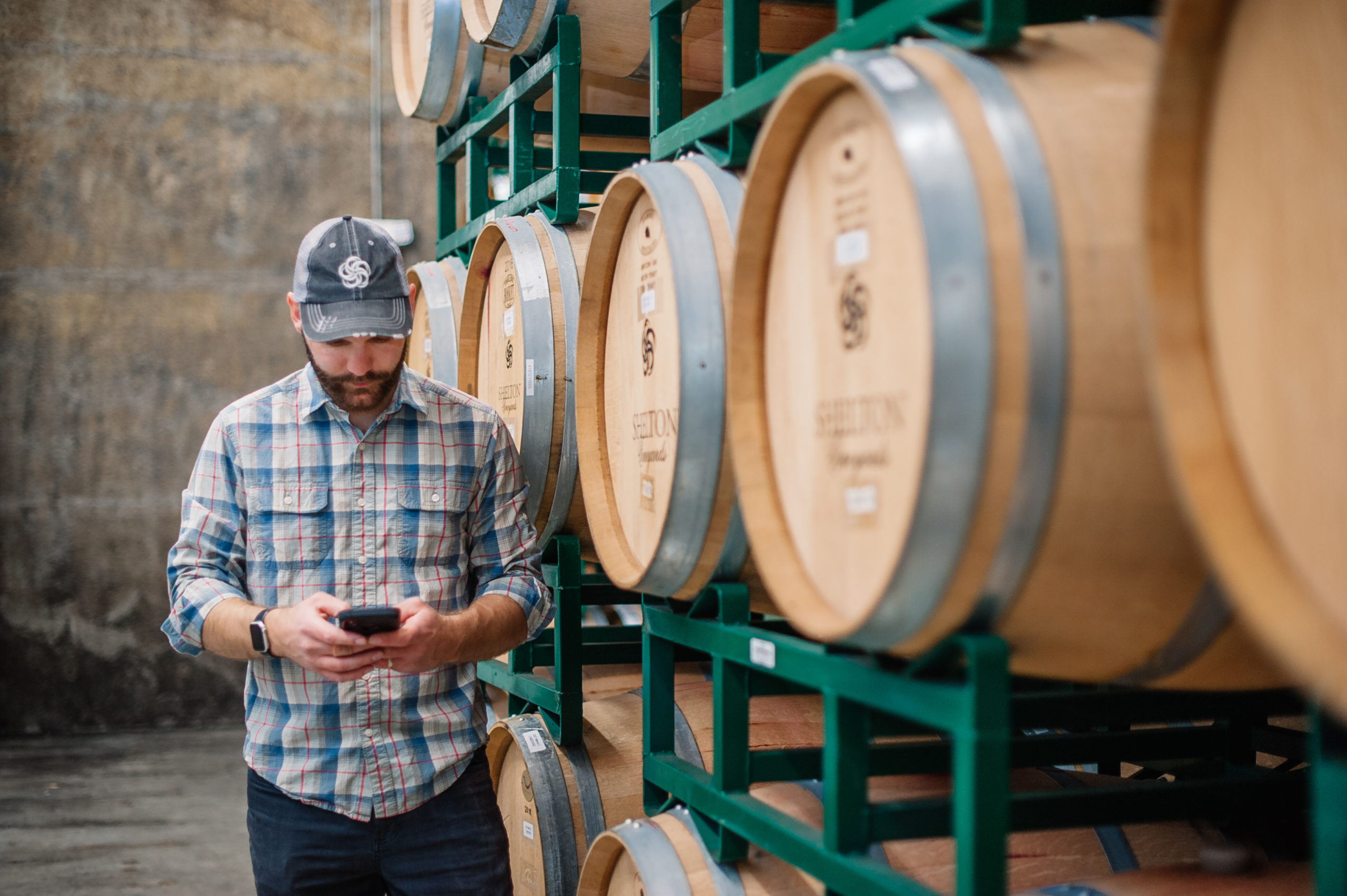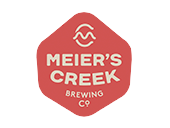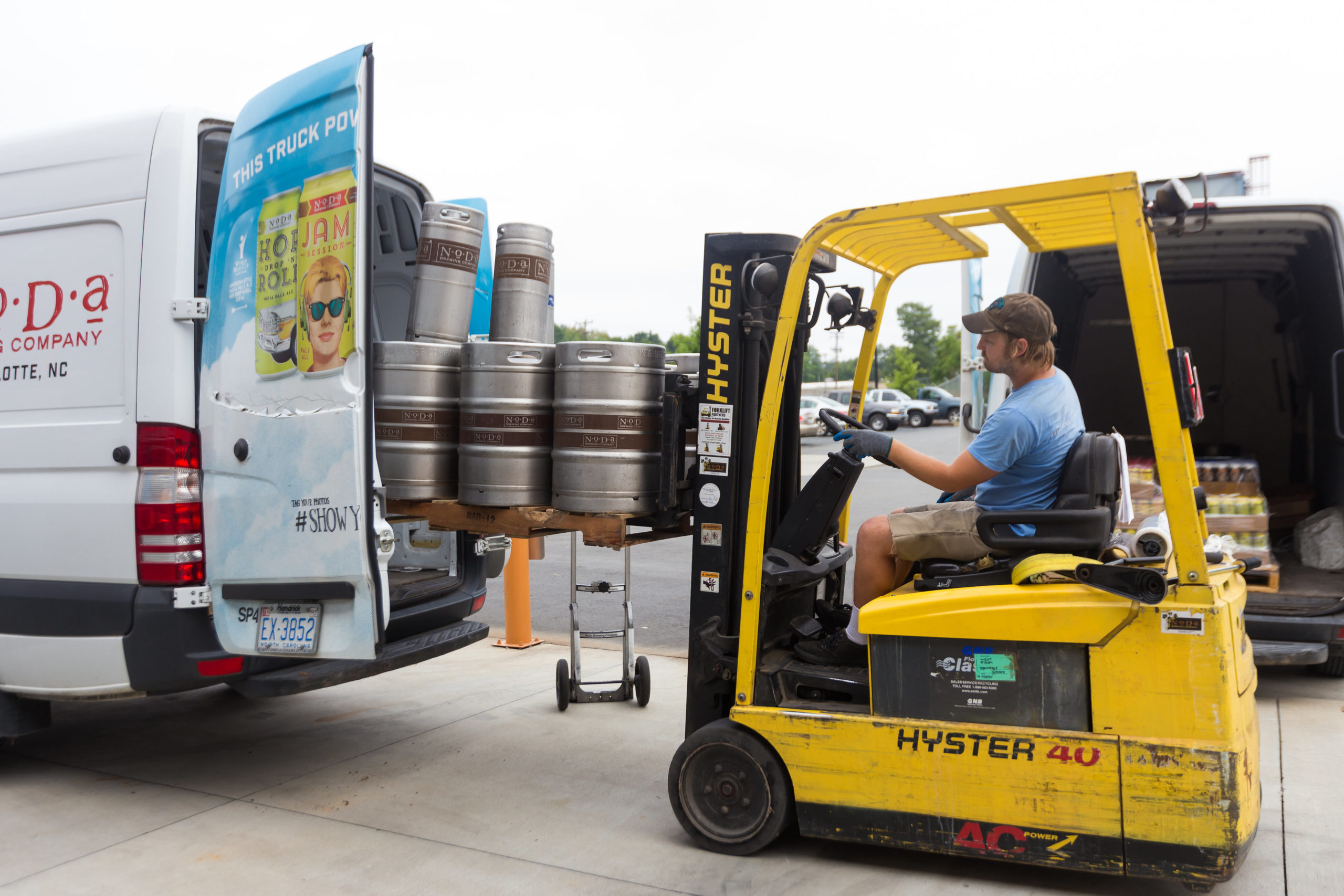From tracking intakes during harvest and planning your wine lots to bottling and selling to retail or wholesale customers, there’s a lot to keep track of when you run a winemaking business.
If you’re looking for a way to save time and streamline operations, you might be considering investing in winery software. It’s a smart move — software can help you automate many of the processes you’re currently doing manually and provide valuable insights into your business that would not otherwise be obvious. But how do you choose the right product?
Table of Contents
- What Is Wine Management Software?
- Look for These Features When Choosing Wine Management Software
- 1. Comprehensive wine inventory management
- 2. Overview of the wine production process from start to finish
- 3. Easy generation of Report of Wine Premises Operations and assistance with other compliance requirements
- 4. A sales portal for viewing the pipeline, sending invoices, and checking in on leads
- 5. Easy cost of goods sold reporting and other insights
- 6. Software integrations that help you avoid data entry errors and save time
- 7. Cloud-based access so your team can use the winery software from anywhere
- 8. Unlimited users and unlimited customer support for no extra cost
- Get the Industry’s Only End-to-End Wine Management Software
What Is Wine Management Software?
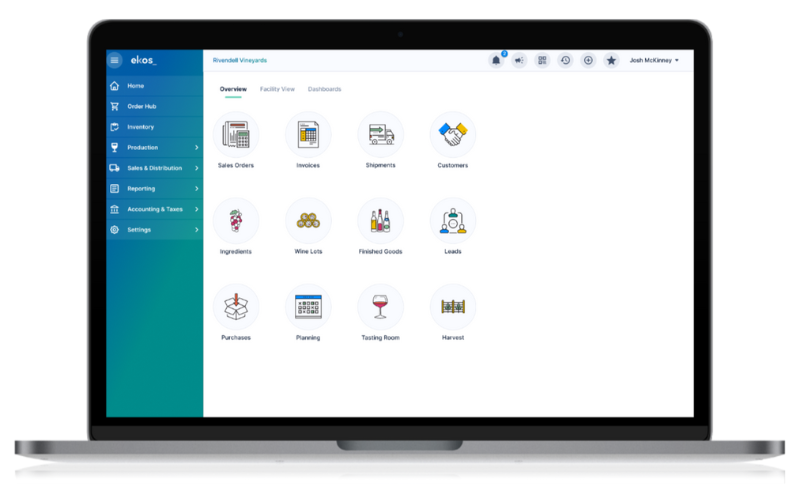
Wine management software serves as a central hub for your business’s records and reports, housing data about inventory, production, and sales activities that can then be shared with your accounting system. The goal of wine management systems is to give you a holistic view of your business and deliver insights for better decision-making.
This might make you think of a traditional “ERP” (enterprise resource management) system, but we’re referring to winery-specific solutions here. The problem with generic ERPs is that many of the companies that make these systems are giant corporate entities, so it can be difficult to get personalized customer service or tailor the product to your needs if it doesn’t quite do everything you need it to (and good luck getting any of your feature suggestions turned into reality). Traditional ERP systems also tend to be prohibitively expensive for all but the largest wineries, so it’s worth exploring your options.
If you’re looking to improve your record-keeping processes and get more business data, you might think direct-to-consumer (DTC) software is the answer to your problems. We absolutely recommend using a digital solution to manage your wine club, in-person, and online sales, but that’s only one piece of the puzzle. What about production data, wholesale inventory and sales, and accounting? Wine management software bridges the gaps between these seemingly separate parts of your business so that you can see the important information all in one place.
Look for These Features When Choosing Wine Management Software
Any wine management software worth its salt will include these important components:
1. Comprehensive wine inventory management
Are you counting grapes and entering your totals into a static spreadsheet to keep track — or, even worse, writing them on a clipboard or in a binder? How do you decide when to order more bottles or other packaging materials for the lots you have in progress? Do you just guess? Software can help you keep track of your inventory, automatically depleting your resources when you use them for production or packaging and letting you know when your supplies are getting low. Perhaps more importantly, winery software should help you manage case goods inventory once your wine is bottled and ready to sell. If it doesn’t (and, unfortunately, not all software solutions do), you’re missing out on tracking a major part of your business.
2. Overview of the wine production process from start to finish
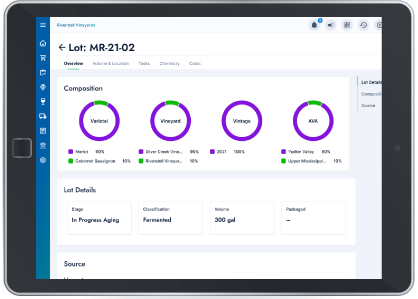
“When did we start fermenting those Pinot Noir grapes? Have we pressed the Chardonnay grapes that came in yesterday? How many lots are in progress, and when should they be completed?” Winery software should help you answer questions like these easily by giving you a view of your facility (based on the actual layout of your production area) and providing simple ways to check on what is in each tank or barrel, what needs to be packaged, and what has been moved to storage or your tasting room at any given time.
3. Easy generation of Report of Wine Premises Operations and assistance with other compliance requirements
Managing the day-to-day operation of your winery might be smooth sailing for seasoned winemakers, but gathering data for TTB reporting is a nightmare for just about everyone, no matter how many years you’ve been doing it. One of the best features of winery software from an owner’s perspective is the ability to funnel your business’s data into the reports you need to send to the government on a monthly, quarterly, or annual basis. If the software you’re looking at doesn’t have this feature, move on.
4. A sales portal for viewing the pipeline, sending invoices, and checking in on leads
This will be most important for wineries that partner with distributors (or self-distribute) to sell bottled wine to local stores. Maybe you even sell your wine to local bars and restaurants so they can offer it to customers. No matter what you’re looking to keep track of, the winery software you choose should offer functionality that allows you to send and receive invoices, create inventory receipts, and keep track of vendor and supplier information all in one place. If you really want to streamline the sales order process, find a solution that comes with a digital order portal for your distributors and retail/restaurant accounts. It will help you manage your wholesale sales requests in one place and stop wasting time on back-and-forth emails, texts, and phone calls with customers.
5. Easy cost of goods sold reporting and other insights
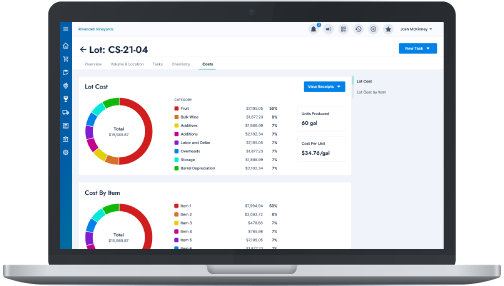
One key benefit of comprehensive wine management software is that it helps you easily (and accurately) track your cost of goods sold (COGS) over time for specific products, giving you the information you need to set your prices now and evaluate them later on. We point this out specifically because some winery software solutions don’t handle case goods inventory well (or at all), which makes it impossible to evaluate COGS correctly. Ensure your chosen software tracks wine lots from harvest intake all the way through the sales process so that you get a complete picture of the costs that go into each one.
6. Software integrations that help you avoid data entry errors and save time
Look for winery software that can sync with DTC and accounting systems you already use (or would like to use) to maximize the time-saving benefits. A DTC integration allows you to automatically send transactions from systems like Square, Commerce7, or Shopify to your core winery management system, depleting the inventory you sell. Once your wine management software and accounting system are integrated, all your inventory, sales, and purchasing activity will be synced with your accounting software (e.g., QuickBooks or Xero) so you enter it one place and automatically have the information you need for end-of-month reporting. Your bookkeeper or CPA will thank you.
7. Cloud-based access so your team can use the winery software from anywhere
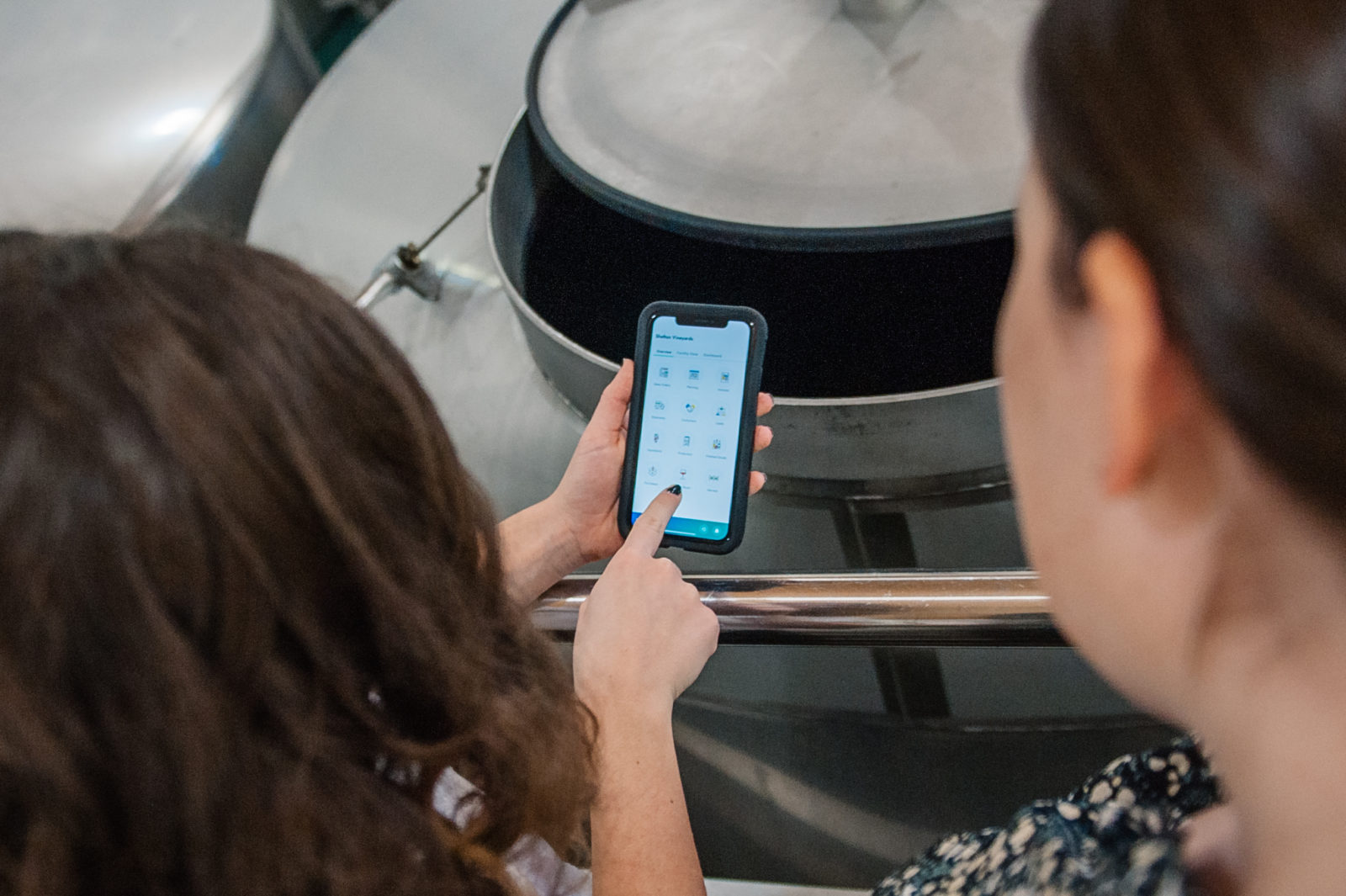
This is another major one. What if your head winemaker wants to make a note about one of the lots after inspecting it, but they have to walk all the way back to the office desktop and sign in in order to do that? Chances are, they’ll get distracted by another important task before they make it to the computer. Plus, as an owner, it’s likely that you’re not always on-site at the winery when you want to check in on things. The winery software you choose should be cloud-based so you can use it from your phone, tablet, or computer no matter where you are.
8. Unlimited users and unlimited customer support for no extra cost
Finally, you should be able to have logins for as many users as you need without having to pay per user. If you’re new to business management software, this might sound crazy — you really have to pay per user to use some of these services? Sadly, yes, and it can get pretty pricey if your team is bigger than a handful of people. But any decent winery tech company offering will rely on a great product — not charging outrageous fees — to earn and retain customers. You should also check to see if high-quality customer support is included in your monthly subscription so you can get help if something goes wrong.
Get the Industry’s Only End-to-End Wine Management Software
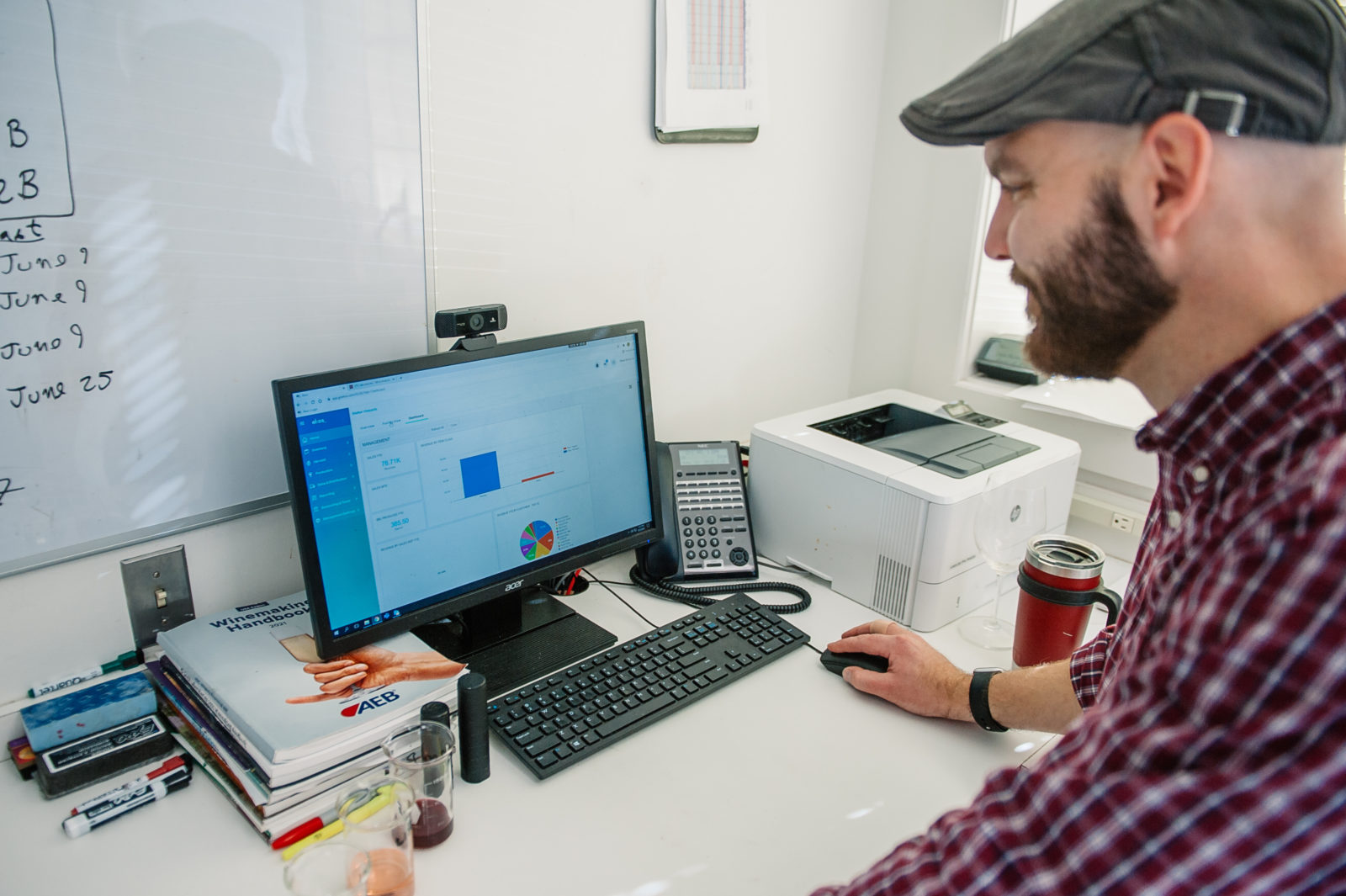
At Ekos, we are committed to empowering winemakers to streamline their operations, boost profits, and uncover valuable insights with intuitive business management tools. Our proprietary wine management software offers everything we mentioned above in one easy-to-use system. Each registered user on your team gets their own custom dashboard based on their role in your winery, and we work with you directly to get your team set up and ensure you feel comfortable using Ekos as part of your daily routine. Plus, with unlimited customer support and an expansive Knowledge Base filled with helpful instructional resources, we’re always here to help.
